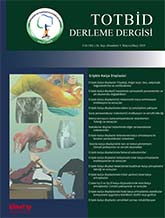
Developmental dysplasia of the hip (DDH) leads to progressive degenerative changes in the femur and acetabulum, causing secondary osteoarthritis if not diagnosed early and treated appropriately. Total hip arthroplasty (THA) is the most commonly chosen surgical option for reducing pain, improving mobility, and enhancing quality of life in these patients. However, due to abnormal bone morphology and soft tissue adaptations in dysplastic hips, THA is technically challenging and associated with higher complication rates compared to standard THA. In adult hip dysplasia, indications for THA should be individualized based on the severity of arthritic changes, symptom intensity, and patient expectations. Anatomical classifications such as Crowe and Hartofilakidis are commonly used to guide surgical planning; however, the most critical factor remains the presence of pain that affects the patient`s quality of life and functional ability. Functional outcomes demonstrate that THA, with appropriate surgical techniques and planning, effectively improves gait patterns, reduces pain, and enhances functional hip scores in dysplastic hips. Nevertheless, meticulous patient evaluation and preoperative planning is essential to ensure prosthetic stability and minimize complications.